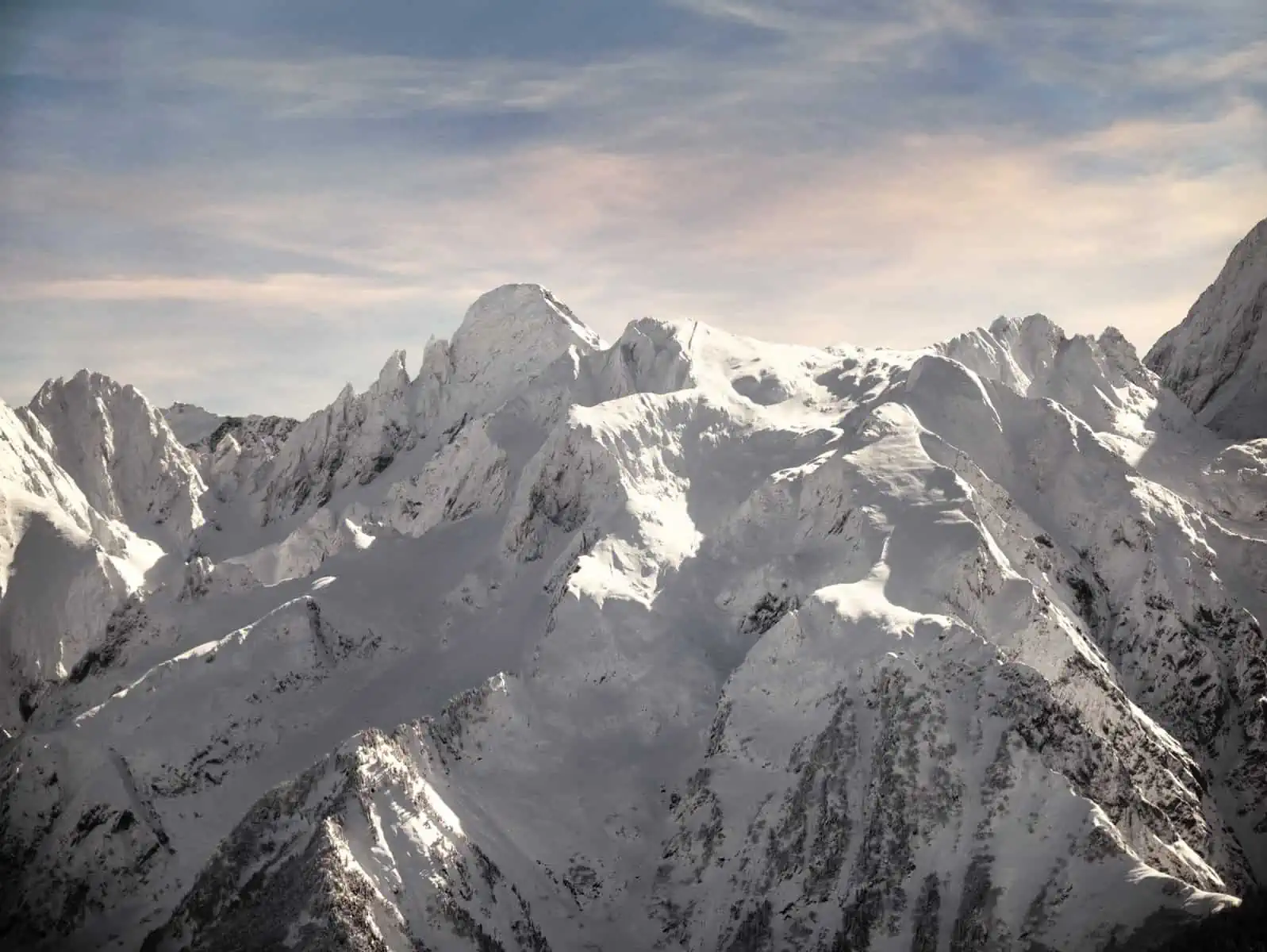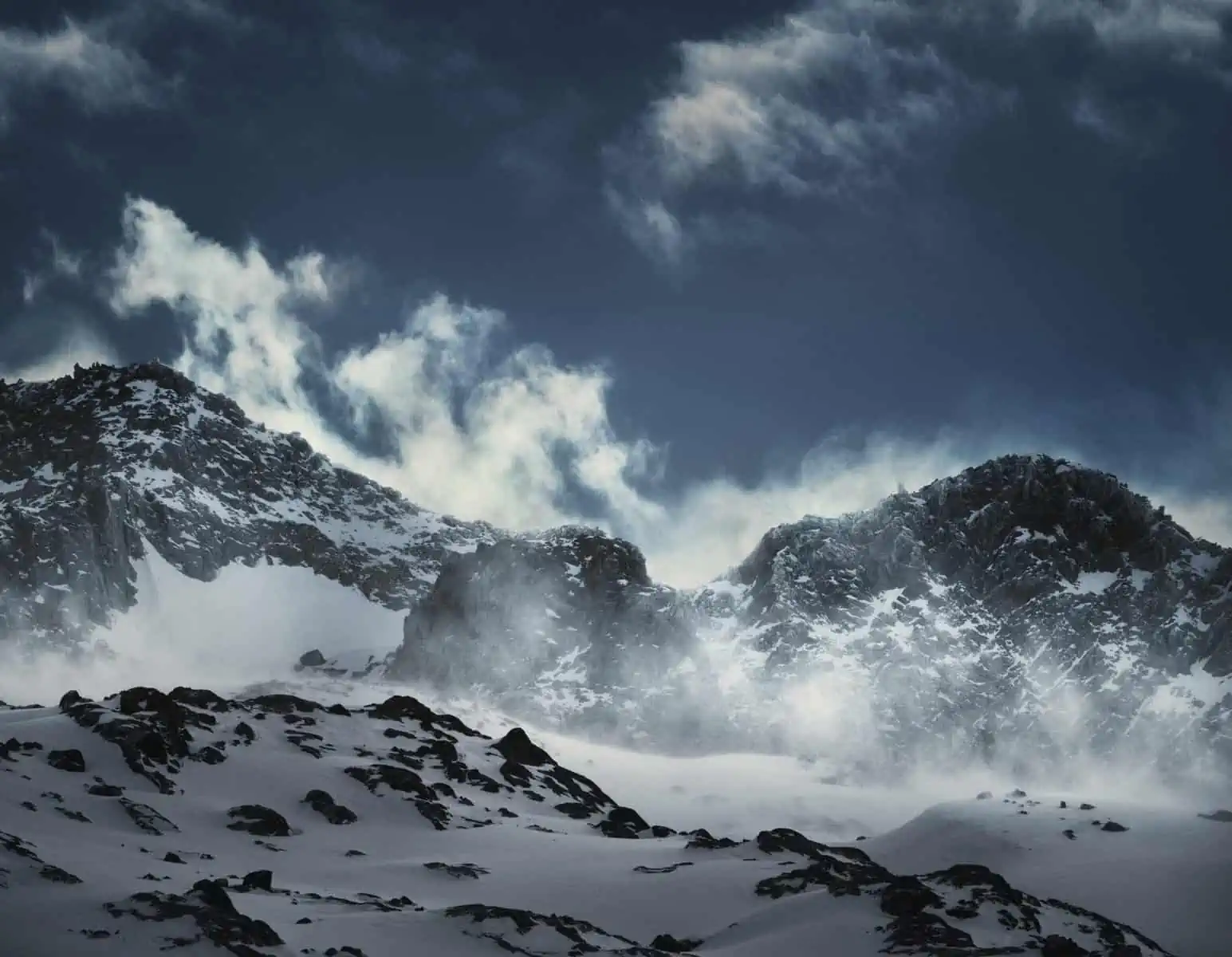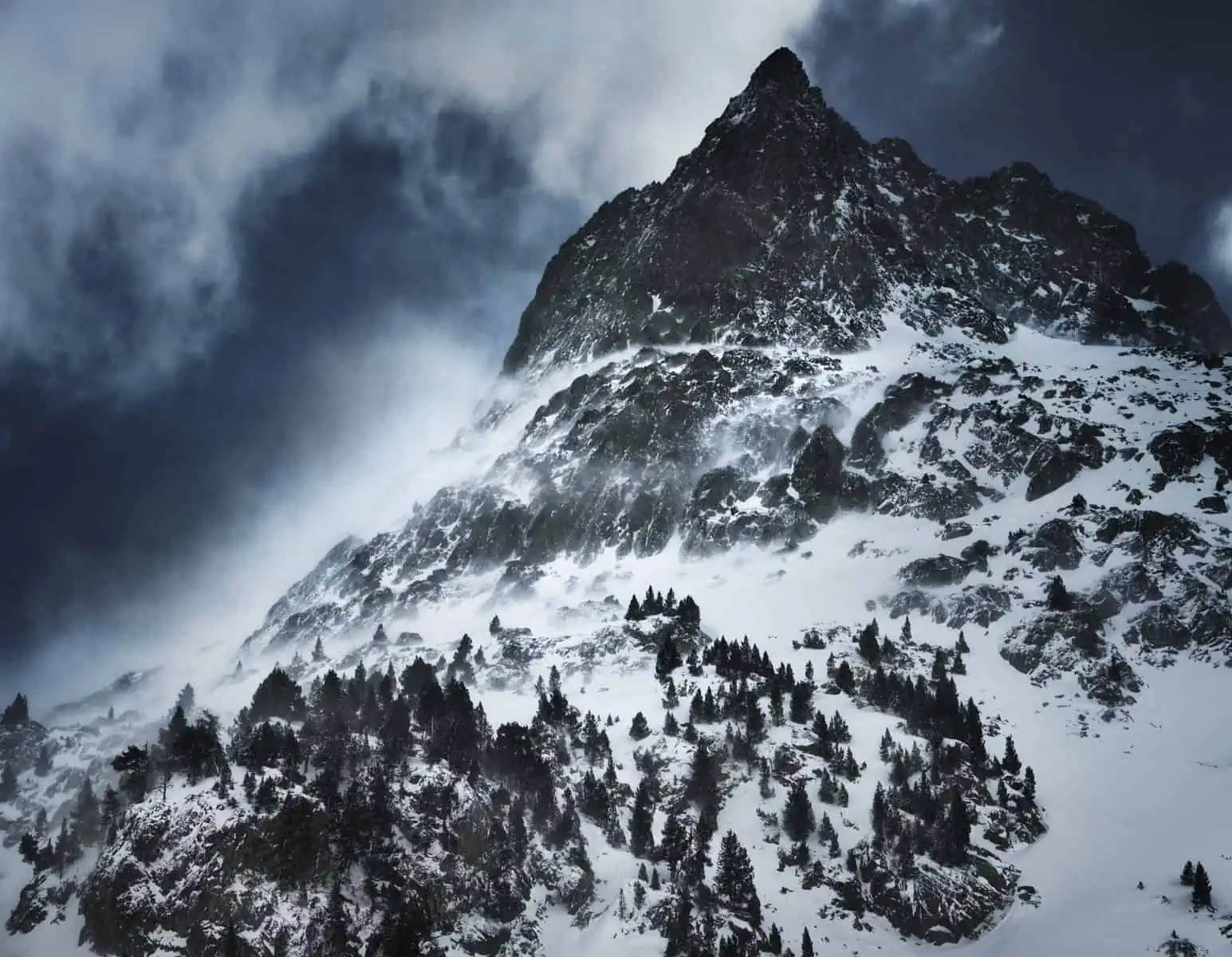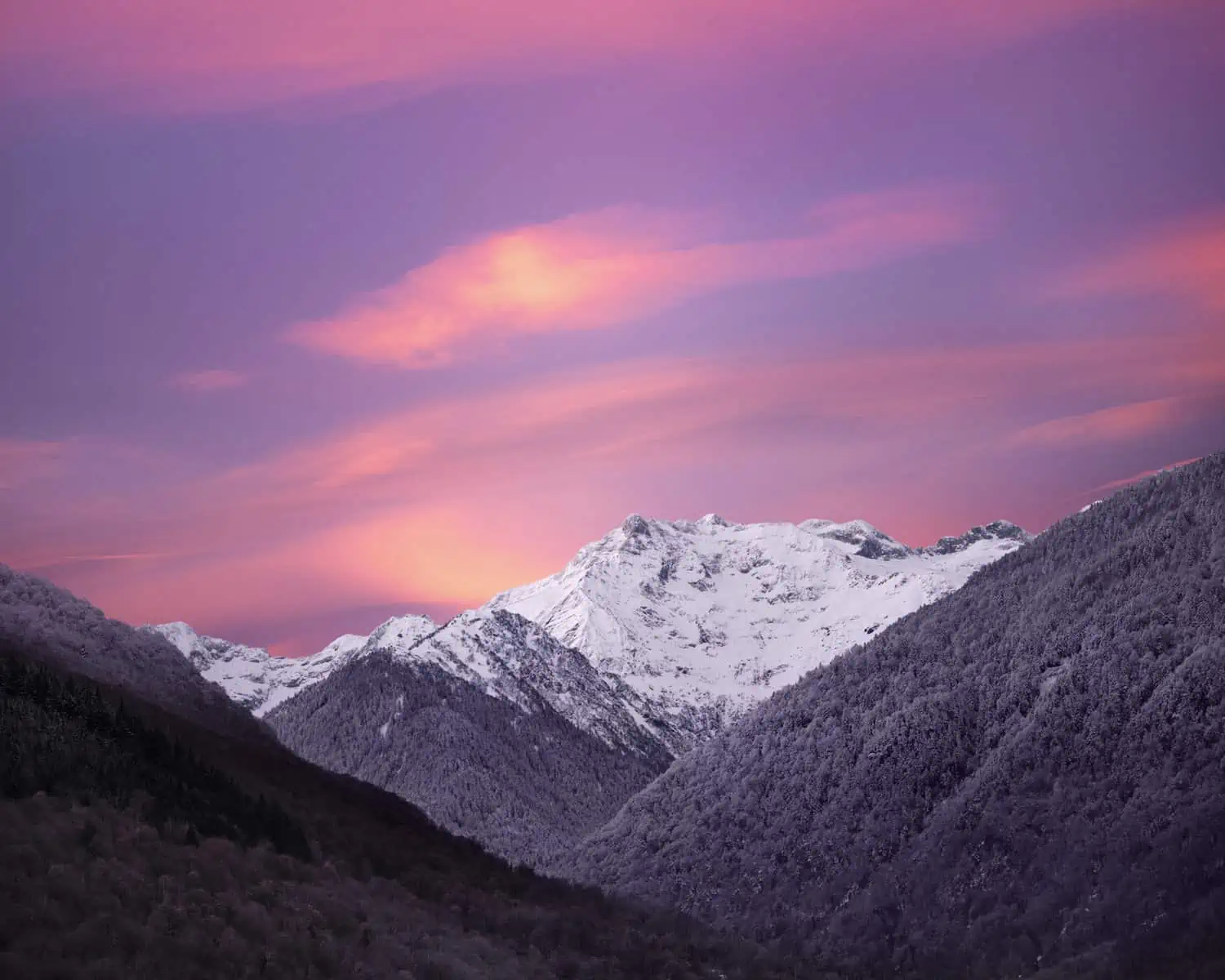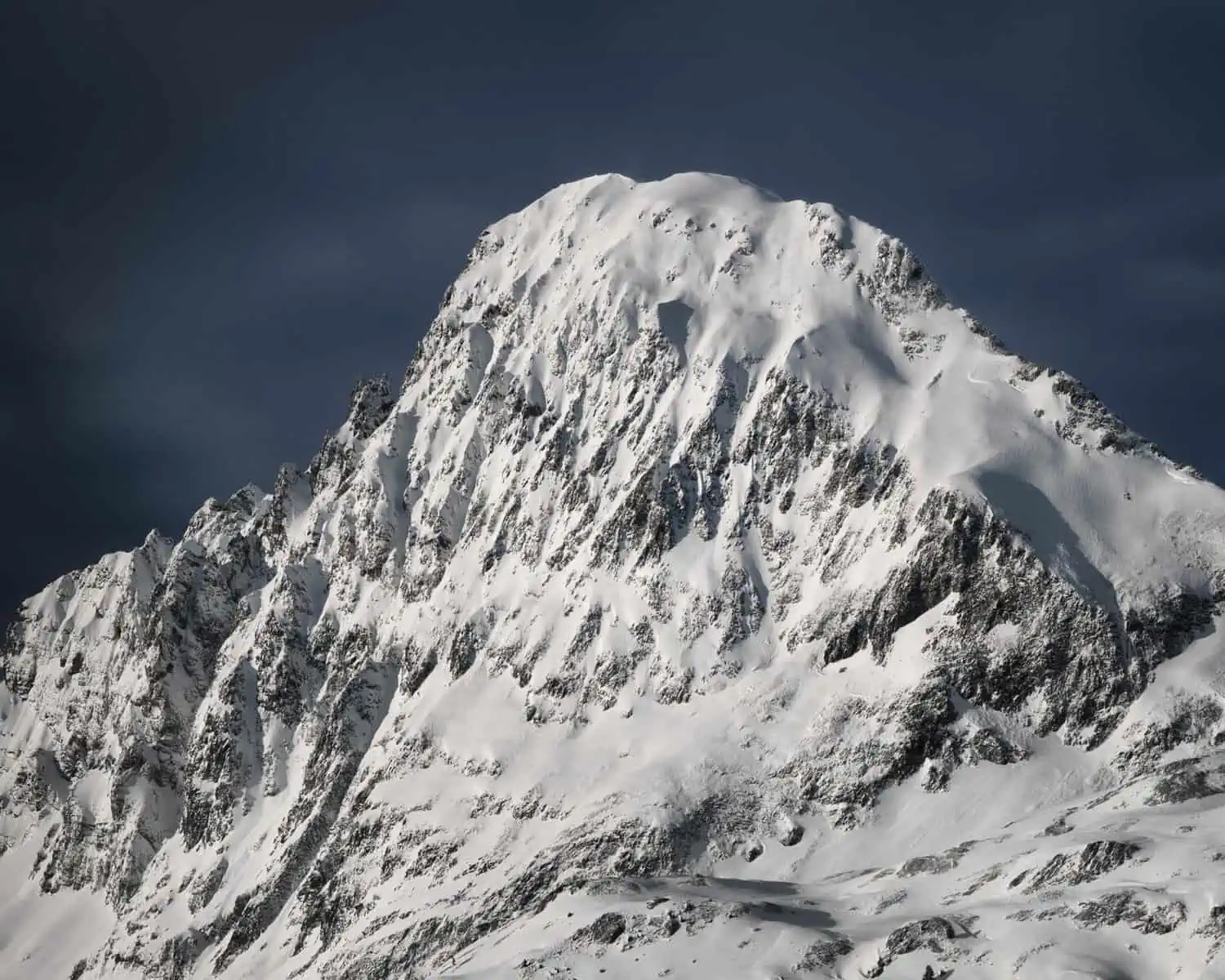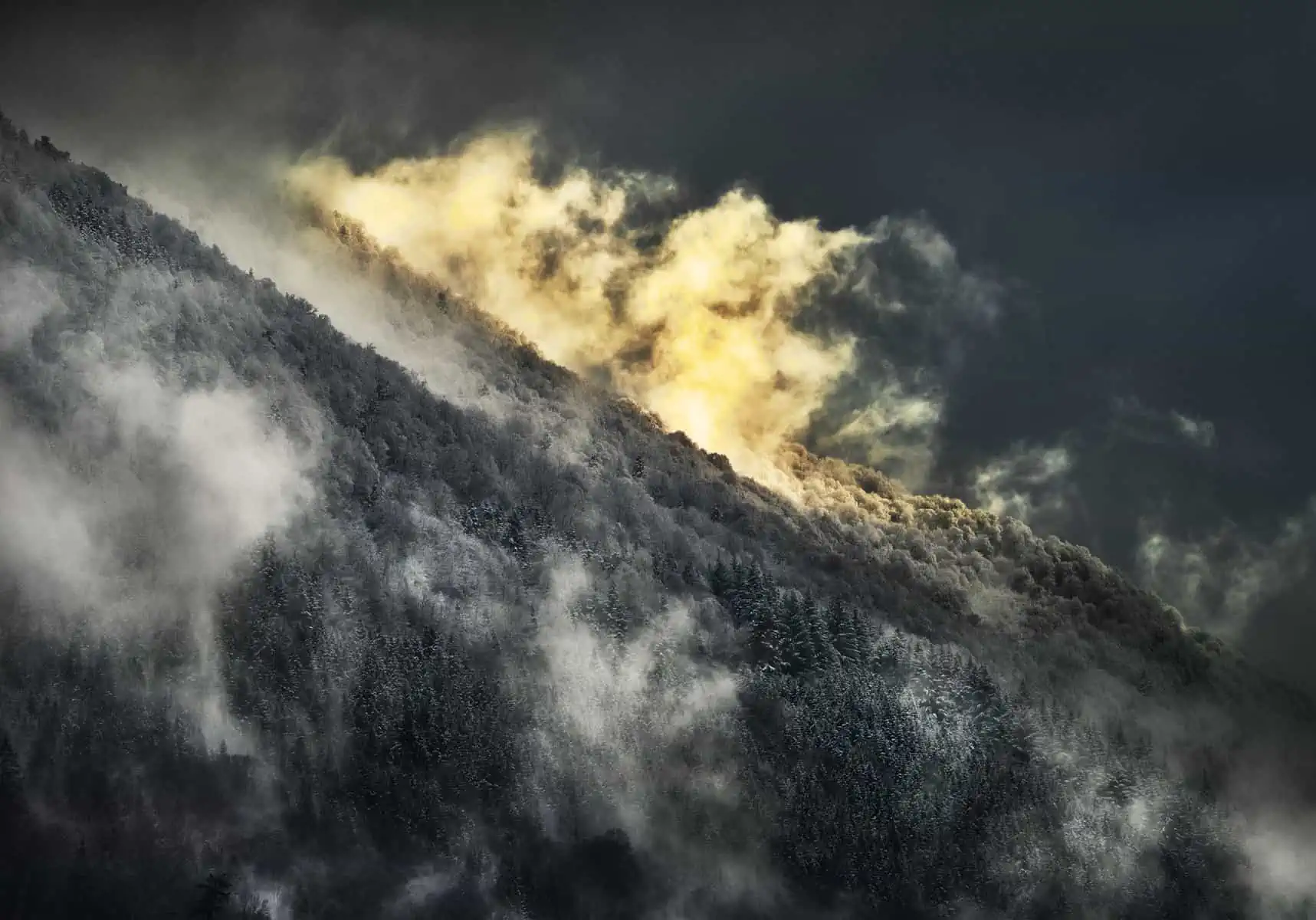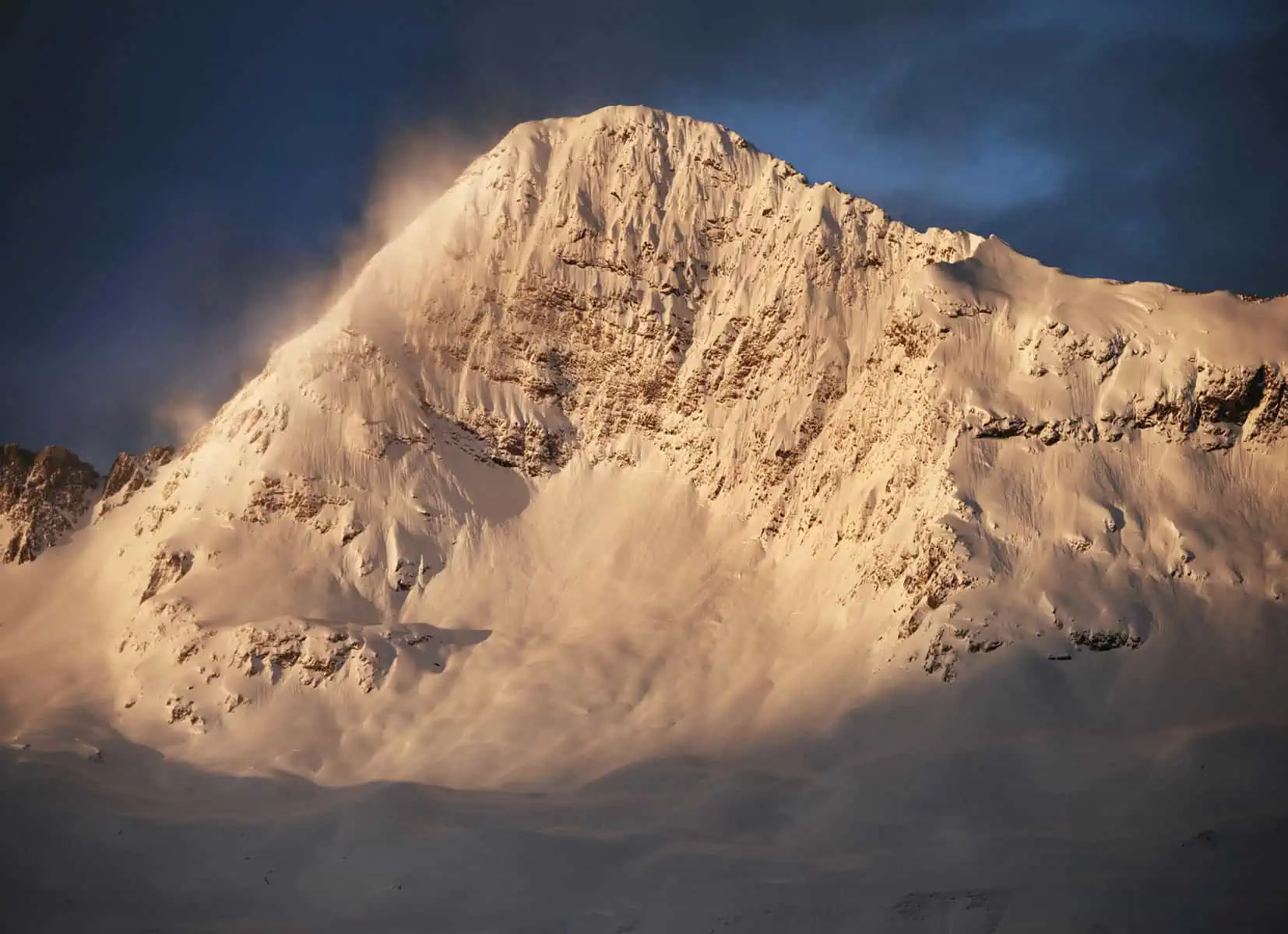This post is sponsored by Fujifilm UK
In January of 2019 we headed off to the Pyrenees on an expedition where we would learn a range of skills for furthering our mountaineering in deep winter. The emphasis of this was on self-sufficiency, providing a similar experience to that of some expeditions in the Himalayas. We knew we would be carrying a lot of equipment and it became clear that the weight and bulk of our regular photographic equipment – based around full frame DSLRs and fast zoom lenses – was going to be a problem.
That’s why we were happy when Fujifilm UK offered to sponsor us on this expedition with their X Series Mirrorless equipment. The size and weight benefits of the X Series cameras relative to our usual full frame equipment are clear just from glancing at the spec sheets. Without the need to design around the bulky mirror box, and also by basing their cameras around the smaller than full frame APS-C sensor size, Fujifilm can build their cameras and lenses both smaller and lighter than full frame or even crop sensor DSLRs. But there’s a lot more to a camera than its size and weight and we were excited to see how the Fujifilm equipment would meet our expectations in the field and perform in extreme weather conditions.
Fujifilm provided us with two camera bodies: The X-T3 and the X-H1. The X-H1 was supplied with the VPB-XH1 vertical grip. These two bodies are definitely at the upper end of the X System. There are plenty of in-depth reviews for both of these cameras available online, so we won’t go into depth listing their features. However, the key difference most people will spot is that the X-T3 has a slightly higher resolution relative to the X-H1 – 26 vs 24 Megapixels – whilst the X-H1 sports in-body image stabilisation. From our perspective, the difference between 26 and 24 megapixels in negligible, so for us, this would not be a critical factor in choosing between the two and in terms of potential image quality, we would say both cameras are equal.The in-body stabilisation is another matter and whilst once again it wouldn’t be an absolute deal-breaker, we would say it is a very useful feature and, depending on how you use a camera, may well be worth considering.
For us, the key difference between the two bodies comes down to ergonomics, and here Fujifilm have done something that we think is rather unique. If you look at the different models within each of the major manufacturer’s camera systems, you’ll see that often control layouts and general body shape is common across the range. The idea is that you can move from one camera to another with a minimal amount of disruption. With the X-H1 and X-T3, Fujifilm have offered a different handling experience for both bodies whilst still keeping all the main controls in the same place. The X-T3 reminded us very much of a manual film SLR whilst the X-H1 with its deep grip is more like a high end DSLR, especially when the vertical grip is fitted. If you then consider the X-Pro2, the third high end X Series body Fujifilm offer, you’ll see it presents yet another user experience, more like a traditional rangefinder with its unique hybrid optical and electronic viewfinder positioned off to one side of the body. In our opinion, if you are considering buying into the X System, your decision on which body to choose should come not from reading the spec sheet, but from getting your hands on the various cameras and seeing which user experience suits you the best. In our case, Fay instantly took a liking to the handling of the X-T3 whilst the X-H1 with grip suited Matt better.
Adding the grip to the X-H1 may sound counter-intuitive when our objective was to save weight and size, but we do believe that the smallest camera isn’t always the best. We often find that without a grip even a relatively large DSLR body is too short and doesn’t feel quite right in hand. Adding the vertical grip provides that bit more surface area to hold on to, and for us, that really transforms the handling of the camera, so bringing the grip along was well worth the small extra weight penalty.Another bonus is that the grip allows you to have up to three batteries in the camera (two in the grip itself and one in the camera body). For long shooting days in harsh conditions where you want to try to avoid compromising the weather sealing as much as possible, this is a real bonus and, as you’ll see later, would come in very handy on the mountain.
Lens wise, we were supplied with the Fujinon XF 16-55mm f/2.8 R LM WR and the Fujinon XF 50-140mm f/2.8 R LM OIS WR along with the XF 1.4x TC WR teleconverter.The lens names – as seems to be case with all brands right now – are quite a mouthful, but essentially, they are Fujifilm’s top end pro level zooms with constant f/2.8 maximum apertures. The build quality – as with the bodies – seemed rock solid. The ‘OIS’ in the 50-140mm lens name indicates that it has built in stabilisation.One peculiarity we noticed with this lens was that when the camera was switched on, there was a constant hum from the lens which we took to be the OIS is action. The sound persisted even with the OIS switched off. At first, we thought this was down to a setting in the camera needing to be changed, but further research showed that it’s simply how the lens is designed to work (many photographers – ourselves included – will be used to stabilisation kicking in for a few seconds as you focus, before settling itself down). This is no big deal in its own right and, more importantly, it didn’t seem to cause any measurable hit on the battery, but it’s worth bearing in mind should you find yourself using the camera and wondering if you have a fault!
The APS-C sensor introduces a 1.5x crop factor relative to full frame, so the zoom ranges of these two Fujinon lenses corresponds well with the 24-70mm f/2.8 and 70-200mm f/2.8 lenses we usually use for the bulk of our work.Neither of these Fujifilm lenses could be described as particularly compact or light, but next to their full frame DSLR counterparts they were certainly much less bulky – and that difference was really obvious after a long day!
We arrived in France raring to go, but the mountains – as they often do – decided to throw a few surprises our way. A weather front heading west across Europe had already caused havoc in the Alps and it hit the Pyrenees just as we arrived. The initial plan, attempting an accent of Vignemale, the highest peak in the French Alps, had to be shelved. Plan B involved heading to the Spanish side of the Pyrenees which we hoped would be shielded from the weather front and instead attempt an ascent of Aneto, the highest summit in the Pyrenees. Unfortunately, even shielded by the mountains, the weather was too dangerous for a summit attempt, bashing us with high winds, extreme low temperatures and 5/5 avalanche risks. We made it to the mountain hut we were to stay in but had to spend most of the time waiting out the storm that provided white out conditions with next to no visibility. This was hard but is the nature of deep winter expeditions and we took every opportunity we could when there were breaks in the storm to work on our hands-on mountaineering skills. The trek in was gruelling and carrying very heavy packs whilst trying to navigate the intensive snowfall was some of the hardest work we’ve ever done. After that long day trekking in, we were so grateful for the heavily reduced weight of the Fujifilm equipment. This is when you start to realise the real benefit of the mirrorless system. Usually our DSLR equipment can weigh upwards of 15kg on its own, so add an extra 17kg to that when you’re trekking and need to carry all of your equipment for the week and your share of the camp food, whilst still actually being mobile and you’ve got a problem. That load, unless you’re really used to it, is not sustainable for long distances.
We were impressed with the handling of the system. We both tend to work with our cameras in manual exposure mode almost all the time and both the Fujifilm bodies offered direct controls for shutter speed, aperture and ISO. After years of command dials, it was nice to have these ‘old school’ controls, with actual numbers on the dials so you could see the settings at a glance.We really liked having a dedicated ISO dial available so this value could be changed as quickly as the shutter speed, rather than involving a button press and another function dial to change. This is something none of the other major systems offer and whilst shooting with the X Series cameras we found ourselves changing ISO value more than we usually would – basically, we were treating it as another variable along side aperture and shutter speed rather than something that you ‘lock down’ and only change if there is a major shift in shooting conditions.
The main controls, focus point selection, white balance, metering pattern and drive mode (single shot, continuous shooting etc.) were all easily accessible and modifiable whilst shooting. Of these, the focus point selection is the control we use the most after shutter speed and aperture. Both of us favour using a single AF point that we can manually move around the frame whilst shooting rather than any of the auto or face detection modes. In common with most other manufacturers, Fujifilm employ a small joystick to move the point around. We have to say that we find these tiny controls sticks less than ideal and think that the control would be much more user friendly if it could just be made a little larger. On the subject of autofocus, we found this to be generally quick and accurate – there were one or two instances when the focus system got confused when shooting through foliage etc. and would lock onto the foreground, though this was no worse than what we’ve experienced with other systems.
The extreme weather also packed in a good few challenges. Due to the whiteout, we had less time to shoot than we had initially hoped for and it was a lot colder than we had anticipated – with windchill, the temperature was routinely below -25C, and the conditions on the peak of Aneto were -42C with 120km/h winds. The upshot of this was that we had to wear a lot more protective equipment than we had initially thought we would: thick ski mitts replaced regular gloves and ski goggles replaced our sunglasses. Some of the functions requiring a more delicate touch, were tricky – like using the joystick to change focus point, or adjusting the white balance, but the main functions of shutter speed, aperture, ISO and shutter release were all easily controllably whilst wearing ski mitts. We quickly gave up trying to change the focus point, though, and defaulted back to the old ‘focus and recompose’ method we all used before cameras had multiple AF points. We thought we’d have to rely on the rear screen for composition but were happy to find that the viewfinder had a high enough eye relief to be functional even with deep goggles.One other point we should make here is that both our goggles and hiking sunglasses have polarised lenses which can sometimes cause LCD screens to appear degraded, or even fully black.Fortunately, both the EVF and rear display screens just appeared slightly darker when viewed through our polarised lenses. A real improvement! But more so than this, when you’re out in the field in these kinds of extremes, you cannot afford to take your goggles off – so this means you can actually still shoot whereas in the past you’d have to prioritise your safety over your images.
The battery life in the extreme cold did not seem any worse than when we were shooting with the cameras before we left for the Pyrenees. We liked that a cable was supplied with the X-H1 that allowed both batteries in the grip to be charged whilst in the camera – though It’s a shame you couldn’t charge the third battery in the camera body with the same cable. By the end of most days, we would have almost used a full battery in both cameras. Plug sockets are a valuable commodity in mountain refuges with everyone wanting to charge their devices, so we found it useful to move our spent batteries into the X-H1’s grip so they could be bulk charged from the same power socket.
For us, the elephant in the room with this system was always going to be the electronic viewfinder (EVF). Remembering electronic finders from the early days of digital photography, and how awful they were – this opinion has stuck with us. It turns out we were very wrong!The experience is still very different to an optical finder, but it is not worse than it – just different. There are so many advantages: real time exposure, white balance and depth of field preview. The Mirrorless design means that focus points can be placed all over the image, going right into the corners. There’s also the possibility to customise the in-finder display – we found it particularly useful to add a realtime histogram, and it wasn’t long before we were using this to judge exposure more than the traditional exposure meter.
Both the X-T3 and X-H1 can be paired to a mobile phone by Bluetooth and remotely triggered via the Fujifilm Cam Remote app. Your phone becomes a wireless remote release, but beyond this, also allows you to control camera settings etc (the app has other features like the ability to view files on the camera, but we didn’t make use of these). This is a great feature and staggeringly useful – we actually can’t believe that every camera doesn’t have this functionality!
We only ever shoot raw, and we have an established workflow for how we ingest, select, process and post-process images before we consider them to be finished and ready to present. Our raw processor of choice is Phase One’s Capture One. Recently Phase One has entered into a deal with Fujifilm and there is now a specific version of the software available exclusively for users of Fujifilm cameras – a free ‘Express’ edition, plus a paid for ‘Pro’ edition that only supports Fujifilm cameras, and which comes in at a considerable saving over the regular ‘Pro’ edition. It’s worth noting that this software will also handle raw files from Fujifilm’s GFX Medium Format system. We genuinely believe that Capture One delivers the best quality processes of any software out there today. There’s a certain quality to the images it outputs that is simply more pleasing to us.
From our perspective, it’s important that any camera equipment we use can mesh with our existing workflow as seamlessly as possible, and the X Series cameras worked really well. The final processed images have a lovely quality – not overly ‘plastic’ and digital looking. We tend to avoid shooting at very high ISO settings, but up to around 3200 – which is our general upper limit – noise is nicely controlled. There have been a few cases where we’ve processed a file twice – one as a normal process and a second darker process for detail in the sky – and have been impressed by the amount of detail available from a sky that initially looked quite flat and grey. We prefer to set our final colours in Photoshop as we think it gives finer control than any raw processor. So far, the Fujifilm files have stood up exceptionally well to this. Once again, this is difficult to precisely quantify, but having worked with the files for a while now, we have a sense that they are malleable in terms of post production potential.
At 24 and 26 Megapixels, the Fujifilm cameras do have slightly less absolute resolution than we are usually used to, and this does limit the potential for extreme crops or very large prints. However, we gave up worrying about megapixels a long time ago, and it is no longer the first spec we look at when assessing a camera. We believe that the files from the Fujifilm cameras would be great for most purposes. For those who want more, Fujifilm have their GFX medium format system already offering 50 megapixels and with a 100 Megapixel model promised soon. These cameras offer many of the same features as the X Series and some of these (such as stabilised lenses) are unique in Medium Format – We are keeping an interested eye on developments here!
Our experience with the X cameras was really good. There’s a lot that’s appealing about the smaller, lighter Mirrorless system – especially on trips and treks where the amount of gear you can bring is limited because of all the other things you have to carry. We enjoyed the handling of the cameras and Fujifilm’s unique approach to ergonomic choice should broaden the appeal of this system. Since the release of the X-Pro1 in 2012, the system has grown to include ten current bodies and over twenty lenses. There are still some gaps in the lens line up – especially If you like shooting with fast long lenses, but the system is still growing and, lenses from other systems can be adapted to the X System if there is a particular focal length you cannot live without. From our point of view, we enjoyed working with the Fujifilm cameras, they stood up really well to some very extreme weather conditions and most importantly, we returned with some amazing images.

